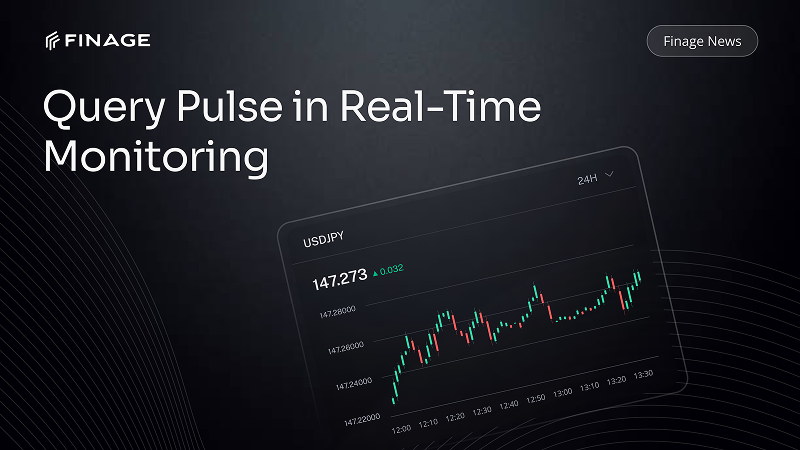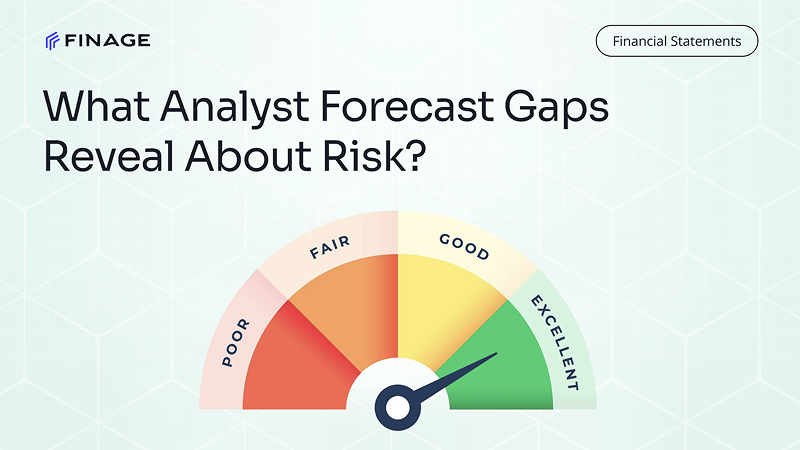The Role of Aggregated Market Data in Risk Management
13 min read • June 15, 2025

Introduction
Risk management is the backbone of financial stability. Whether you're trading assets, managing portfolios, or building fintech infrastructure, understanding exposure and reacting to market changes in real time is critical. One of the most valuable—but often overlooked—tools in this process is aggregated market data.
By combining data from multiple sources, aggregated feeds provide a broader and more accurate view of market conditions. They help detect volatility, assess liquidity, monitor price slippage, and model exposure across regions or exchanges. Without aggregation, decisions are often based on fragmented or delayed information.
This article explores how aggregated data enhances risk management workflows, why real-time visibility matters, and how data infrastructure needs to be built with security, consistency, and scale in mind.
Table of Contents
- Why Aggregated Market Data Matters
- Common Risk Types That Rely on Aggregated Feeds
- From Fragmented Feeds to Unified Views: How Aggregation Works
- Real-Time vs Delayed Data in Risk Assessment
- Key Data Points to Watch in Volatile Markets
- Supporting Risk Models with Historical Aggregates
- Data Integrity: Accuracy, Timestamps, and Redundancy
- Infrastructure Considerations for Aggregated Feeds
- How Aggregated Data Strengthens Compliance and Reporting
- Final Thoughts: Finage’s Role in Smarter Risk Management
1. Why Aggregated Market Data Matters
In today’s fast-moving financial landscape, no single data source tells the full story. Prices can vary between exchanges, spreads fluctuate by the second, and liquidity may disappear without warning. Relying on isolated or delayed data leaves institutions vulnerable to blind spots—especially during periods of volatility.
Aggregated market data addresses this by combining feeds from multiple venues, instruments, or regions into a unified stream. It gives risk managers and systems a more complete, timely picture of the market, enabling faster and more informed decisions.
Instead of watching a single price tick, you gain access to a broader view—across geographies, asset classes, and order books. This multi-dimensional perspective is especially important when managing complex positions or responding to market stress.
Aggregated data doesn’t just improve accuracy—it reduces reaction time. When pricing discrepancies emerge, or liquidity dries up in one venue, having a cross-market view allows systems to detect and respond immediately, rather than waiting for delayed confirmation from a single feed.
Ultimately, aggregated data gives risk teams what they need most: context. And in financial systems, context is often the difference between reacting on time—or reacting too late.
2. Common Risk Types That Rely on Aggregated Feeds
Risk comes in many forms—credit risk, liquidity risk, operational risk, market risk—and each one depends on timely, accurate information to be managed effectively. Aggregated market data plays a central role in several of these areas, especially where volatility or fragmentation are involved.
Market Risk
This is the most directly impacted. Traders and institutions use aggregated pricing to calculate Value at Risk (VaR), assess price sensitivity, and model exposure across different market conditions. When prices vary by venue or region, using only a single feed could underestimate risk or trigger false signals.
Liquidity Risk
Without aggregation, a system might show tight spreads and available volume—but only on one exchange. In reality, true liquidity could be limited, or spreads wider elsewhere. Aggregated data gives a more honest reflection of the tradable market and helps systems detect when liquidity is vanishing.
Execution Risk
Algorithms and trading systems rely on aggregated quotes to route orders intelligently. Without a full picture, they risk executing at suboptimal prices or missing better opportunities entirely. Aggregated data supports smarter routing and more accurate cost estimates.
Compliance & Position Monitoring
Aggregated feeds help ensure fair pricing, especially for firms that must report best execution or prove that trading behavior aligns with market norms. Monitoring positions in real time, especially when they span multiple venues or instruments, becomes more accurate when data is normalized across sources.
These are just a few areas where risk is misjudged when relying on a narrow lens. Aggregated market data broadens that lens—providing the situational awareness that risk systems need to be both proactive and defensible.
3. From Fragmented Feeds to Unified Views: How Aggregation Works
Market data aggregation is about more than just combining feeds. It’s a process of normalization, validation, and real-time alignment across sources that often have different formats, latencies, and standards.
Most markets operate in silos. Each exchange reports its own prices, volumes, and order books—sometimes with slight delays, and often with unique symbol identifiers or timestamping methods. Aggregation bridges these differences to create a coherent, unified view of market behavior.
Normalization
The first step in aggregation is normalization—converting symbols, time formats, and price structures into a consistent format. This allows data from different sources to be compared side by side and ensures that downstream systems don’t misinterpret conflicting information.
For example, a security traded on multiple venues might have different symbol names or price rounding conventions. Without normalization, these inconsistencies create noise and confusion.
De-duplication and prioritization
Markets often report overlapping information. Aggregated feeds need logic to prioritize which source to trust in the event of conflicting prices or missing values. This is particularly important during fast-moving market events when some venues lag behind others.
Timestamp alignment
Accurate risk modeling depends on knowing when something happened, not just what happened. Aggregators must align timestamps to account for network delays, source latencies, and clock drift. Even small discrepancies can distort time-sensitive decisions.
Real-time merging
Finally, aggregation merges all inputs into a continuous, high-throughput stream. This can include real-time price ticks, top-of-book quotes, and depth-of-market snapshots—all streamed to risk engines or dashboards with minimal delay.
Aggregation turns fragmented, noisy inputs into a clean, real-time picture of the market. It’s not just about having more data—it’s about making data more usable, especially in environments where speed and accuracy drive every decision.
4. Real-Time vs Delayed Data in Risk Assessment
Timing isn’t just important in trading—it’s fundamental to risk management. The difference between real-time and delayed data can determine whether a firm acts decisively or reacts too late. For systems tasked with monitoring exposure, pricing, or liquidity, even a few seconds of delay can result in misjudged risk.
Real-time data: Precision under pressure
Real-time feeds allow systems to observe changes as they happen. When market conditions shift rapidly—during earnings reports, macroeconomic news, or liquidity squeezes—only real-time aggregation can deliver the clarity needed to act in the moment.
This is especially critical for:
- Automated trading platforms with risk thresholds
- Margin and collateral systems that must adjust in seconds
- Volatility models that react to price velocity and spread changes
- Intraday risk dashboards used by operations or compliance teams
With real-time data, these systems can respond to threats, not just report them after the fact.
Delayed data: Suitable for slower-moving decisions
Delayed data (e.g., 15-minute or end-of-day feeds) is still useful—just in different contexts. It’s typically used for:
- Backtesting and strategy evaluation
- End-of-day risk reporting
- Long-term exposure modeling
- Regulatory submissions where real-time accuracy isn’t required
The key is understanding where delay is acceptable and where it introduces blind spots. Many risk teams use both: delayed data for trend analysis, real-time data for immediate decision-making.
Aggregation enhances both
Whether working in real-time or with delayed inputs, aggregated data ensures you’re not relying on just one viewpoint. Even delayed data benefits from multi-source confirmation—removing anomalies, correcting outliers, and improving the overall reliability of insights.
In short, real-time aggregated data is vital for reacting, while delayed data is valuable for reflecting. A complete risk management strategy knows when to use each—and ensures both are built on consistent, high-integrity inputs.
5. Key Data Points to Watch in Volatile Markets
Volatility tests every part of a risk management system. It reveals how well your models respond, how quickly your alerts trigger, and how accurately your data reflects reality. In moments like these, aggregated market data provides not just more information—but better information. Knowing which metrics to watch can help your systems react before the damage is done.
Price spreads across venues
One of the earliest signs of dislocation is divergence in pricing between exchanges or platforms. Aggregated data lets you compare these prices in real time, flagging discrepancies that may signal illiquidity, panic selling, or technical issues on a particular venue.
Bid-ask spread and depth
Widening spreads or thinning order books are strong indicators of risk, especially for large trades. Aggregated Level 1 and Level 2 data allows you to track this across multiple markets—detecting whether the issue is local or system-wide.
Volume surges and dry-ups
Sharp increases or drops in volume, especially when inconsistent across venues, often precede price swings. Aggregated feeds help you see whether volume is concentrated in one market or distributed more evenly—a key signal for liquidity and risk exposure.
Time-weighted price movements
Price isn't just about the last tick—it’s about how fast prices are moving and how long they stay at certain levels. Aggregated data supports better intraday modeling by smoothing noise and offering richer context for trends and reversals.
Latency or reporting delays
During periods of stress, some venues may lag behind others. Aggregated systems can detect and compensate for this, ensuring that your view of the market isn’t distorted by slow feeds or outdated quotes.
Watching the right data points—at the right level of detail—is what separates reactive systems from proactive ones. Aggregated market data helps surface these signals more clearly, giving risk teams a better chance to act with confidence.
6. Supporting Risk Models with Historical Aggregates
While real-time data helps manage risk in the moment, historical data is what trains, validates, and improves the models behind the scenes. Without reliable historical aggregates, risk analysis lacks the depth needed to understand how markets behave under pressure—and how your systems should respond next time.
Aggregated history shows true patterns
Historical market data drawn from a single source might tell part of the story, but aggregation reveals much more. By including data from multiple venues and instruments, you get a more accurate picture of:
- Market reactions to macro events
- Price efficiency across exchanges
- Patterns of slippage and spread behavior over time
- Volume dynamics around volatility spikes
This context helps your models detect what’s typical and what’s anomalous.
Essential for stress testing
Stress tests simulate extreme but plausible market scenarios—sudden price drops, illiquidity, or volatility surges. Without detailed historical aggregates, these simulations often underestimate risk or miss key edge cases that only show up across venues.
By replaying past high-volatility periods using multi-source data, risk teams can test how systems might behave if similar conditions return.
Building benchmarks and thresholds
Historical data is also key for setting alert thresholds and understanding normal behavior. How wide does the bid-ask spread usually get for a given asset? What volume drop counts as unusual? Aggregated history provides the statistical grounding for smarter limits.
Supporting compliance and audit
Beyond modeling, historical aggregates play a role in reporting. Regulators increasingly expect firms to explain decisions, prove best execution, and document risk controls. Clean, multi-source historical data helps back up those explanations with clarity and confidence.
Whether it’s powering machine learning models or manual reviews, historical aggregated data adds depth to your risk infrastructure. It connects past behavior to present risk—and improves your ability to forecast the future.
7. Data Integrity: Accuracy, Timestamps, and Redundancy
Risk management is only as reliable as the data behind it. When feeds are delayed, mismatched, or incomplete, even the most sophisticated models can misfire. That’s why data integrity isn’t just a technical detail—it’s a core requirement for managing financial risk at scale.
Accuracy across sources
In aggregated data systems, accuracy means more than simply “correct prices.” It means reconciling discrepancies between sources, correcting outliers, and ensuring consistency at every point in the stream.
This often requires validation layers that catch mismatches in bid-ask spreads, round errors in quote decimals, or anomalies in volume patterns. In real-time environments, this cleaning needs to happen instantly—without introducing noticeable latency.
Precise and trusted timestamps
Time alignment is critical for understanding market behavior. Risk systems depend on knowing when a quote was issued, when a trade occurred, and how long it took to propagate.
Aggregated feeds must normalize timestamps, accounting for latency differences across sources and ensuring consistency across regions. Without this, price sequences become noisy, and time-sensitive decisions (like arbitrage or margin updates) can go wrong.
Redundancy and failover
Single points of failure are not acceptable in risk-sensitive environments. A robust aggregation system includes redundancy—across data providers, data centers, and network paths.
If one exchange goes offline or delays updates, the system should automatically continue streaming from alternate sources without disrupting downstream models. Redundancy is not just for uptime—it’s part of delivering uninterrupted decision quality during market stress.
Ongoing monitoring and correction
Data quality isn’t something you set and forget. Effective systems continuously monitor for integrity—tracking gaps, latency spikes, and feed performance in real time. When problems occur, they need to be flagged, corrected, and (if necessary) routed around dynamically.
Without high-integrity data, risk systems are flying blind. Aggregated feeds that prioritize accuracy, time precision, and failover give institutions the resilience needed to trust their outputs—especially when decisions can’t wait.
8. Infrastructure Considerations for Aggregated Feeds
Aggregated market data isn’t just heavier—it’s more demanding. Processing multiple feeds in real time, normalizing inconsistencies, and ensuring stability under pressure all place unique requirements on your infrastructure. Whether you’re building in-house or relying on a data partner, your systems need to be designed for scale, speed, and resilience.
High-throughput data handling
Unlike single-source feeds, aggregated streams often carry a much higher volume of updates per second. Your infrastructure must be able to ingest, process, and distribute this data without introducing lag—especially when it powers trading engines, dashboards, or risk alerts.
In-memory processing, asynchronous pipelines, and efficient serialization formats all help reduce friction when dealing with high-frequency, multi-source input.
Low-latency delivery
Speed matters. Even small delays in delivering aggregated data to risk models can lead to outdated signals or missed opportunities. Systems should minimize latency at every step—from receiving upstream data, to normalizing and distributing it, to delivering it into analytics layers or trading systems.
Co-located servers, fast I/O, and regional distribution points can reduce round-trip delays and help maintain responsiveness.
Scalable architecture
Market conditions aren’t consistent—and neither is load. Spikes in volume during earnings, news events, or global selloffs can multiply data rates in seconds. Infrastructure must be elastic enough to handle these surges without bottlenecking or dropping updates.
Whether you're using cloud-native autoscaling or on-premise clusters, the ability to expand capacity dynamically is key.
Robust failover and monitoring
Real-time aggregation must continue even when part of the system breaks. This means active failover mechanisms, backup data sources, and constant health monitoring. It also means detailed alerting—so your teams can respond before downstream systems are affected.
Monitoring shouldn’t be limited to system uptime. It should include data freshness, update intervals, source reliability, and normalization health.
The best aggregated data systems don’t just keep up—they stay ahead. With the right infrastructure, you can ensure your risk management platform is ready for whatever the market throws at it.
9. How Aggregated Data Strengthens Compliance and Reporting
Risk management doesn’t operate in isolation—it supports the broader goals of transparency, accountability, and regulatory compliance. Aggregated market data plays an important role in helping financial institutions meet these obligations accurately and defensibly.
Supporting best execution standards
Many regulatory frameworks require firms to demonstrate that they consistently execute trades at the best available prices. This is only possible when you can compare prices across multiple venues in real time. Aggregated data enables that comparison, offering a consolidated view of where and when better execution was possible.
Without this view, firms risk missing opportunities—or failing to prove they didn’t.
Enabling accurate trade reconstruction
In the event of an audit or internal investigation, regulators may request a full reconstruction of trade activity and the surrounding market conditions. Aggregated historical data allows teams to recreate what prices, spreads, and liquidity looked like at the time—across all relevant venues.
This makes post-trade analysis more complete, and more defensible.
Proving fair pricing for clients
For firms that price financial products, quotes, or structured instruments, aggregated feeds help ensure that pricing models are based on a wide market consensus—not a single source. This supports fair client treatment and limits exposure to pricing disputes.
It’s particularly relevant for institutions offering OTC products, internal crossing, or custom baskets.
Strengthening audit trails
A strong compliance function requires a strong data trail. Aggregated data supports this by offering broader context and redundancy. Even if one source fails or lags, the system retains a clearer picture of market behavior, supporting a more complete audit record.
Aggregation doesn’t just improve performance—it improves defensibility. When compliance officers, regulators, or clients ask tough questions, multi-source data gives your answers weight and credibility.
10. Final Thoughts: Finage’s Role in Smarter Risk Management
Risk management depends on clarity—and clarity comes from high-quality, real-time data. As markets become faster, more fragmented, and increasingly digital, relying on a single data source introduces avoidable blind spots. Aggregated market data offers a way forward: more visibility, more context, and ultimately, more control.
At Finage, aggregation is built into the foundation of our market data services. We combine real-time data from global sources, normalize and synchronize it, and deliver it through reliable, developer-friendly APIs—designed for fintech systems that can’t afford delays or guesswork.
Whether you're building a compliance dashboard, powering automated alerts, or running complex exposure models, Finage helps ensure your decisions are based on the most complete picture possible.
You can get your Real-Time and Historical Market Data with a free API key.
Build with us today!
Claim Your Free API Key Today
Access stock, forex and crypto market data with a free API key—no credit card required.

Stay Informed, Stay Ahead
Finage Blog: Data-Driven Insights & Ideas
Discover company news, announcements, updates, guides and more

.png)
